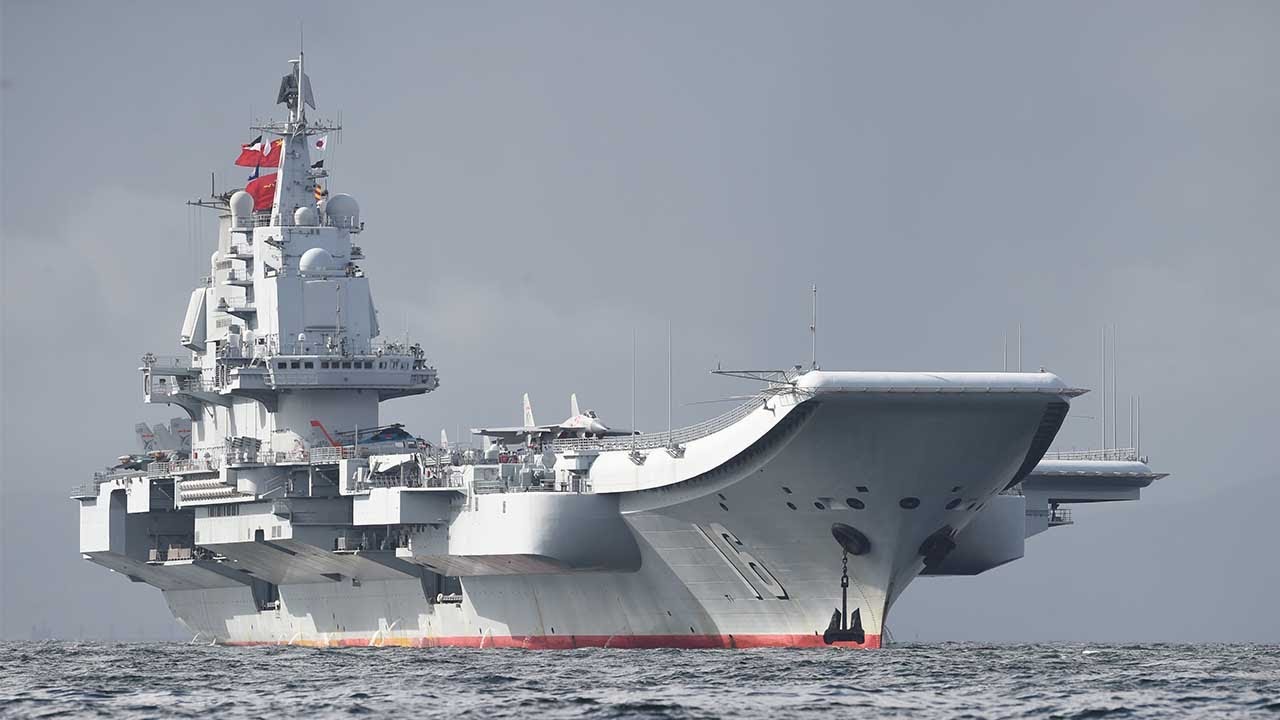The U.S. Navy has been tracking the movements of a Chinese aircraft carrier, and according to multiple reports, an Arleigh Burke-class destroyer ended up in the middle of a Chinese navy flotilla.
Various outlets reported that the Chinese aircraft carrier Liaoning, which was being escorted by five other People’s Liberation Army Navy (PLAN) warships, was sailing from the Philippine Sea and satellite images show the U.S. Navy vessel following closely behind. The images were shared across social media and showed a Type 054A-class missile frigate, a 052D destroyer, a 055 destroyer and a 901 replenishment oiler
The unnamed U.S. destroyer had been following the Chinese carrier since Sunday, April 25. The PLAN warship was on a return voyage to the East China Sea following a month-long deployment to the South China Sea.
The Liaoning had recently conducted naval exercises near Taiwan and followed a low-altitude flight of a Chinese Y-9 tactical reconnaissance plane near Taiwan’s air defense identification zone (ADIZ) – the airspace over land or water in which the identification, location, and control of civil aircraft is performed in the interest of national security.
While it is routine for navies of different countries to observe and even shadow other vessels at sea, Taipei-based defense analyst Su Tuz-yun told Newsweek that it was highly unusual for any U.S. Navy warship – including an Arleigh Burke-class destroyer – to sail into the flotilla unimpeded.
China’s PLAN has been increasingly flexing its muscles in the disputed waters of the South China Sea. One particular area includes the Spratly Island chain, which consist of an island chain that has long been at the center of many territorial disputes wherein numerous countries have claimed certain areas as sovereign territory. Multiple Southeast Asian countries including the Philippines, Vietnam, Taiwan, and Japan, have for years disagreed about who owns various elements of the islands.
China has deployed multiple warships to the region, including the Liaoning, a refurbished ex-Soviet Navy vessel that was purchased from Ukraine more than twenty years ago. Smaller than U.S. carriers, the Chinese warship can carry just twenty-four J-15 fighters – compared to the more than sixty aircraft that can operate from the U.S. Navy’s Nimitz-class or the seventy-five that will be able to operate from the Ford-class.
However, Beijing has been increasing its capabilities and that includes its first domestically-built carrier, Shandong, which while based on the Liaoning, has greatly enhanced the design and could operate upwards of thirty-six aircraft. China is also now building an even more advanced carrier, a nuclear-powered carrier that could feature an integrated electric propulsion (IEP) system, which will enable the use of electromagnetic (EM) launch catapults, which could allow it to operate with more powerful aircraft.
Unofficially referred to as Type 003, the unnamed third Chinese carrier is set to be launched this year. Whether the PLAN ever allows U.S. warships to get up close as the destroyer did to the Liaoning is quite unlikely.
Peter Suciu is a Michigan-based writer who has contributed to more than four dozen magazines, newspapers and websites. He regularly writes about military small arms, and is the author of several books on military headgear including A Gallery of Military Headdress, which is available on Amazon.com.

